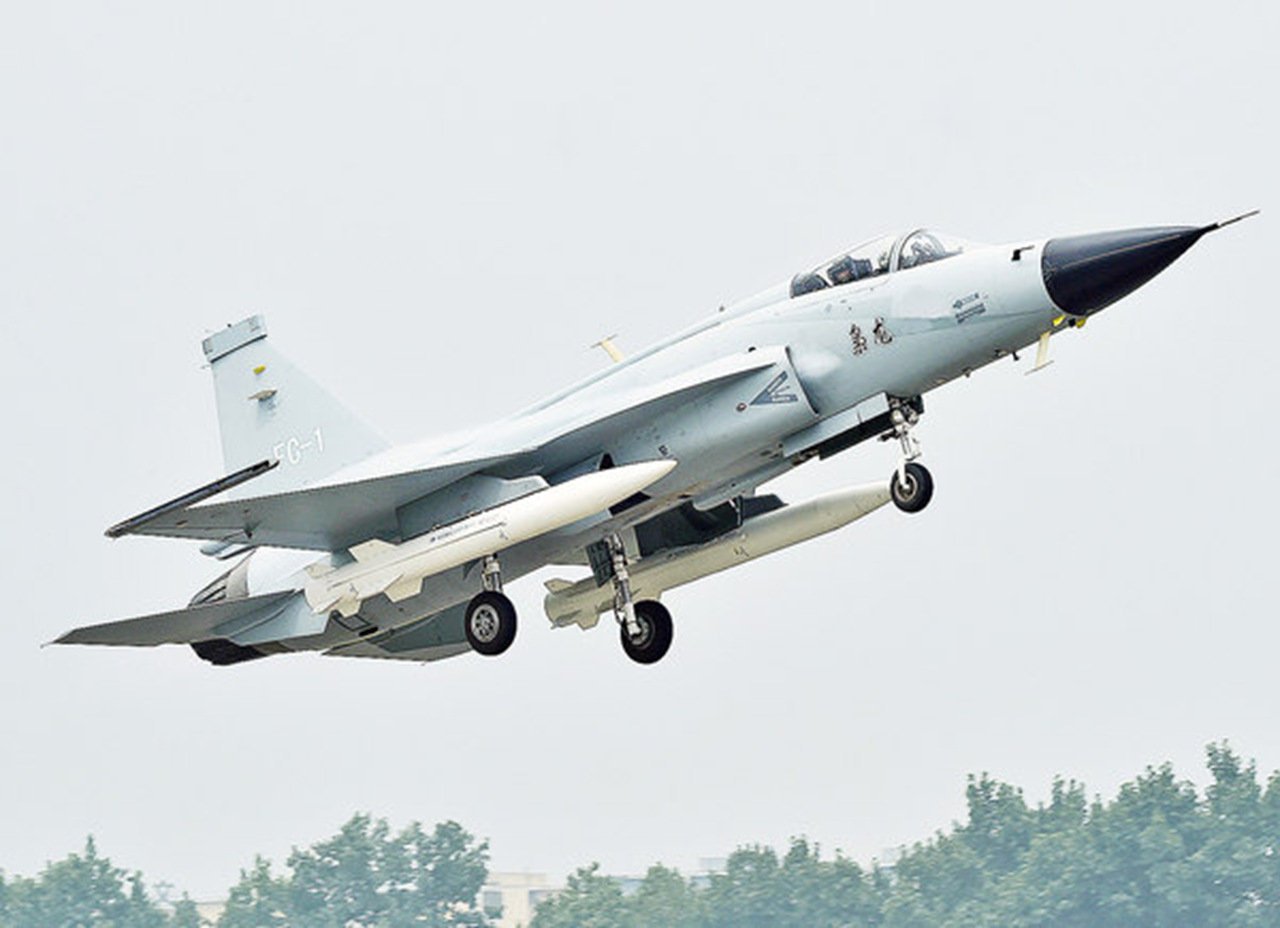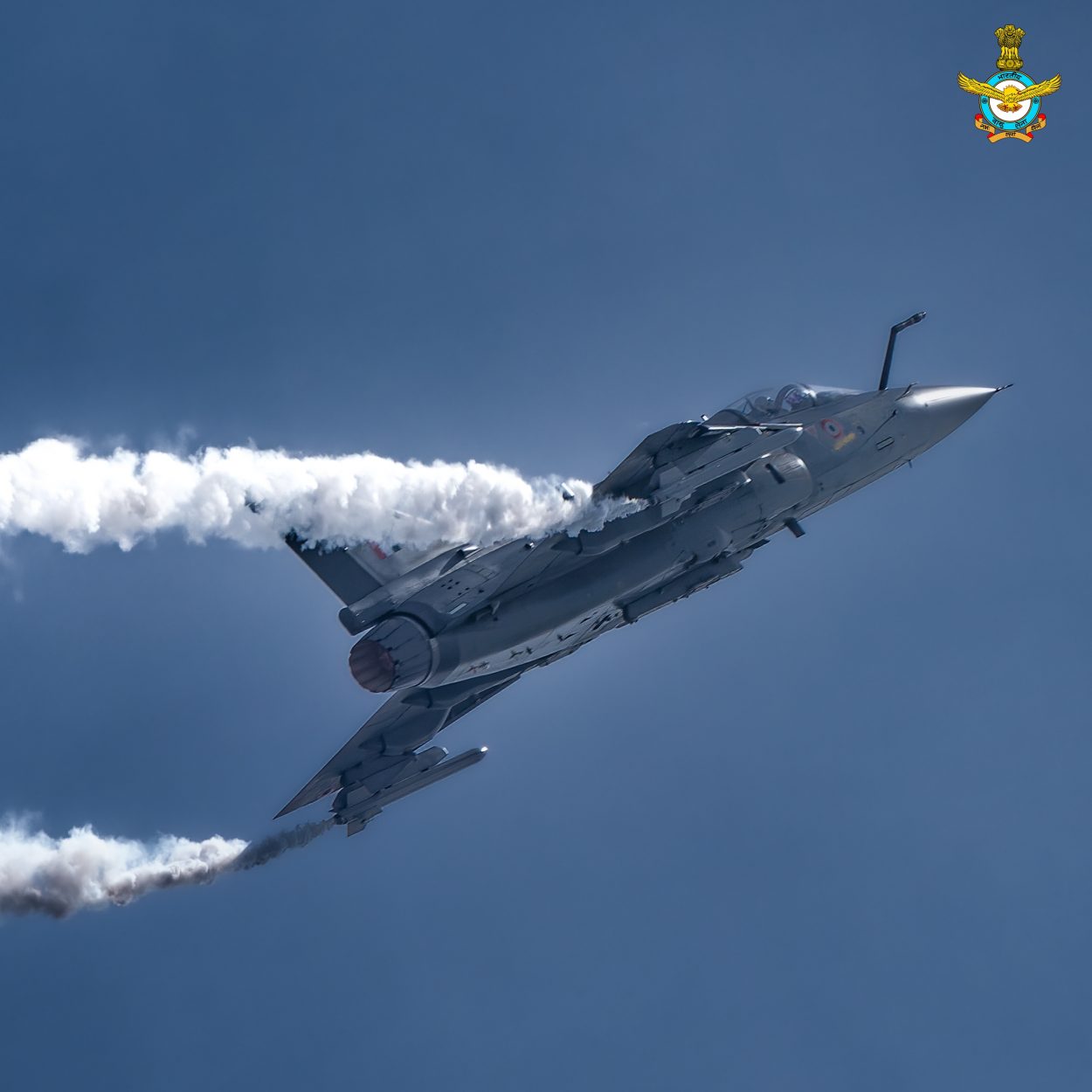The Indian Air Force (IAF) is officially betting big on indigenous Light Combat Aircraft (LCA) and has decided to purchase 90 LCA Mk1A fighters.
According to experts, LCA Tejas fairs better than its regional peers, especially the JF-17 ‘Thunder’ that is powering the Pakistan Air Force (PAF). JF-17, which is the mainstay of PAF, is powered by an unreliable engine and is “hazardous” to the pilot’s safety.
The news of the IAF going for another 90 LCA MK1A should not have been surprising, considering the focus on ‘Atamnirbharta’ (self-reliance) that the Indian government has emphasized.
The order for these 90 aircraft will be in addition to the 83 LCA Mk1A that the force has already placed with the state-owned Hindustan Aeronautics Limited (HAL) in 2021. Once both orders are executed in the next 15 years, the IAF will have 40 LCA, over 180 LCA MK 1A, and at least 120 LCA MK-2 fighter jets.
Both LCA ‘Tejas’ (Brilliance) and JF-17 ‘Thunder’ are single-engine multi-role combat aircraft. But this is where the similarity ends.
“Tejas is a more capable, maneuverable, agile, and reliable aircraft than the JF-17. Also, the Chinese JF-17 was initially powered by a Russian RD-93 engine. The Chinese Air Force (PLAAF) itself found the JF-17 unsuitable for induction,” a HAL official associated with the development of the aircraft told the EurAsian Times, refusing to be named.
“The Chinese then offered their local ‘unproven’ WS-13 engine to JF-17 operators, which was refused by Pakistan for their Block-3 JF-17 fighter jets,” the official said. Unlike the GE-404 engine, which powers many military aircraft globally with an unblemished record, the unproven WS-13 engine of China is riddled with reliability issues. “Without a reliable engine, the JF-17 is very hazardous for pilot’s safety. Chances of mission success are very poor on JF-17 equipped with WS-13 engine,” the official added.
The JF-17 Thunder combat aircraft is jointly developed by the Pakistan Aeronautical Complex and China’s Chengdu Aircraft Industry Corp. It has a Chinese airframe, Western avionics and is powered by a Russian engine.
Since its induction in PAF in 2007, it has seen a slew of crashes. There have been reports of the aircraft being grounded several times due to issues like cracks in guide vanes, exhaust nozzles, and flame stabilizers.
The LCA scores over JF-17 when it comes to serviceability. In the IAF squadron, the LCA has a serviceability of over 75 percent. “Out of 100 aircraft delivered to date, at least 40 JF-17 aircraft are known to be unserviceable. The number of accidents on this aircraft in Pakistan shows a very dismal record. The LCA, on the other hand, has nil accident record to date and high serviceability,” the official affirmed.
Another parameter that sets LCA one notch up the JF-17 is the fly-by-wire system. The JF-17 has a triplex redundant fly-by-wire system, and the LCA has a quadruplex redundant architecture.
Myanmar, which was the first country besides Pakistan to buy JF-17, was forced to ground its fleet owing to technical malfunctions.
Reports suggest the reason behind the grounding in Myanmar was that the airframe of JF-17 reported “vibration issues’. The Irrawaddy Times notes: “The airframe is vulnerable to damage, especially in its wingtips and hardpoints, when the aircraft encounters strong gravitational forces, according to a former pilot of the Myanmar Air Force.”
The critical part of the JF-17 avionics is the China-made KLJ-7 Al radar, which has poor accuracy and maintenance problems, analysts say. The aircraft does not even have an effective beyond-visual-range (BVR) missile or airborne interception radar.
According to a Myanmar media report: “Malfunction of the Weapon Mission Management Computer has caused launch zones of BVR air-to-air missiles to shrink during combat exercises.”
For LCA Tejas, the entire software, including the flight control laws, mission computer algorithm, and weapon release solutions, are designed indigenously. There are unique features in the flight control laws that allow “carefree handling and recovering from unseen situations.”
The LCA’s Turn Round Servicing (TRS) is less than 30 minutes. TRS is the time taken by the aircraft to get airborne again after landing as the aircraft undergoes servicing after each landing. This is because the LCA Tejas has all its services on Hydraulics.
On the other hand, the Chinese-Pakistan joint production JF-17 uses a pneumatic system (powered by compressed gas) to operate some utility services in main and emergency modes. This requires regular charging of pneumatics, which increases the Turn Round Servicing (TRS) time.

The LCA Tejas has a lighter dry, empty weight than JF-17 Thunder and can carry 1000 kg more payload. The LCA has a smaller fuselage, higher sweep angle, and large lift generation area, making it highly maneuverable and more agile when compared to JF-17 Thunder. LCA’s better thrust-to-weight ratio gives it a better climb and turn performance.
The JF-17 has seven hot points for carrying weapons, while the LCA has eight hot points. “All weapons on the JF-17 are imported, making its export variant very expensive and reliant on third parties. The LCA comes with indigenous weapons,” the official added.
The Indian Ministry of Defense recently announced the successful firing of Astra, a Beyond Visual Range Air-to-Air missile developed by the Defense Research and Development Organisation (DRDO). Besides Astra, DRDO is developing Rudram1 anti-radiation missiles, anti-ship missiles, precision-guided ammunition, and glide bombs for LCA.
Another important point in favor of LCA is that the fuel consumption of the GE-404-IN20 engine is lower than the Chinese WS-13 engine powering Block III aircraft or the Russian RD-93 engine (Block I/II aircraft). The JF-17 has only three wet stations in comparison to LCA’s five stations, giving it higher fuel-carrying capability.
“All these give LCA higher endurance by at least 30 minutes in combat configuration,” added the official.

IAF’s Dwindling Fighter Squadron Strength
IAF has been grappling with an aging fleet of fighters. In 2023, the number of surface-to-air missile (SAM) units in the IAF surpassed the number of fighter jet squadrons in its fleet.
The dwindling fighter jet squadrons have been a concern for the force. A representative of the IAF had told a Parliamentary Standing Committee on Defense in 2023 that the force has 31 fighter jet squadrons against the sanctioned strength of 42.
The IAF will retire its last unit of the MiG-21s by 2025, and the LCA will replace the Soviet-vintage fighter jet. The decision to procure more LCA MK1A was taken after IAF Chief Air Chief Marshal VR Chaudhari reviewed the status of the LCA program at the Air Headquarters. The IAF will send the proposal for the government’s nod.
As reported by the EurAsian Times earlier, the IAF is also expanding LCA’s scope of operation from just the peninsula to nationwide and putting it among India’s frontline fighter jets to counter threats from Pakistan and China. This allows Tejas to prove its mettle against the JF-17, not just on paper.
The HAL is expected to complete the deliveries of the 83 LCA Mk1A variants, including ten trainers, by 2029. In 2024, HAL will deliver three aircraft and follow them up with 16 aircraft deliveries from 2025 through two production lines.
- Ritu Sharma has been a journalist for over a decade, writing on defense, foreign affairs, and nuclear technology.
- She can be reached at ritu.sharma (at) mail.com




